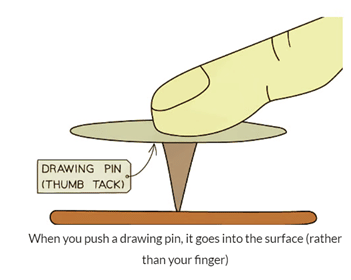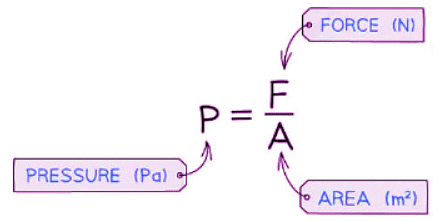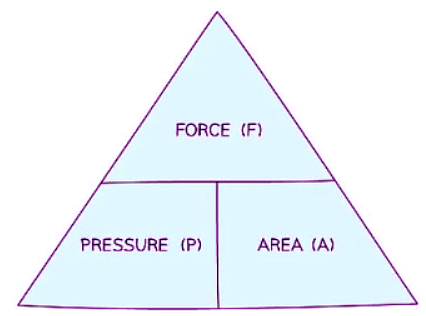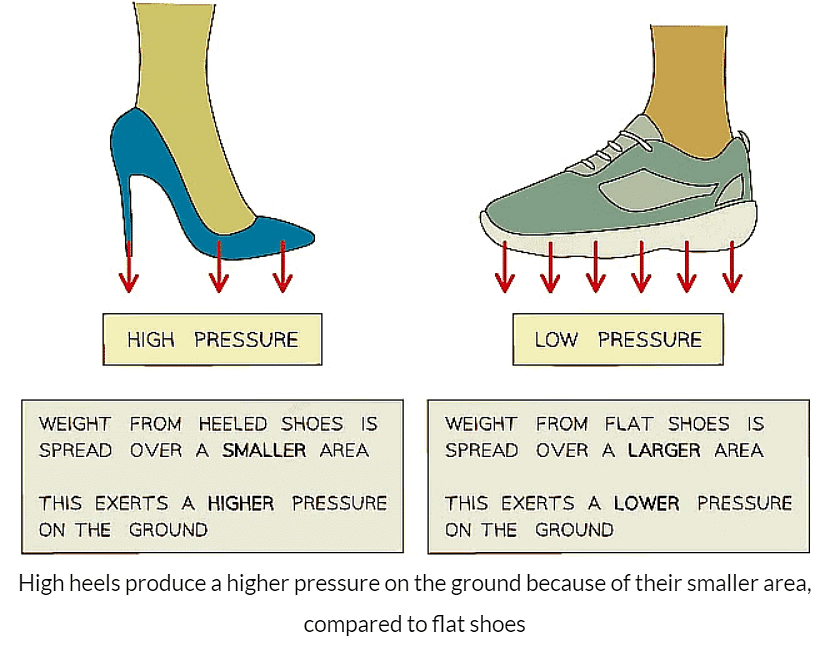Class 10 Exam > Class 10 Notes > Physics for GCSE/IGCSE > Pressure & Forces
Pressure & Forces | Physics for GCSE/IGCSE - Class 10 PDF Download
Pressure
- Pressure is described as the focus of a force or the force exerted per unit area.
- For instance, when a pushpin is pressed downward:
- It penetrates the surface instead of moving upward toward the finger.
- This occurs because the sharp tip concentrates force over a small area, resulting in greater pressure.

- Example 1: Tractors
- Tractors are equipped with sizable tires.
- This disperses the weight (force) of the tractor across a broad area.
- Consequently, the pressure is diminished, preventing the heavy tractor from sinking into mud.
- Example 2: Nails
- Nails feature sharp pointed tips with minimal surface area.
- This concentrates the force, generating significant pressure over a small region.
- As a result, the nail can be driven into a wall.
- The formula for calculating pressure at the surface of a fluid is:

- Pressure is denoted in the unit of Pascals (Pa).
- The area considered should consistently be the cross-sectional area of the object.
- This refers to the area where the force acts perpendicular to it.
- The equation can be rearranged using a formula triangle:

- This equation indicates that:
- When a force is distributed across a wide area, it leads to low pressure.
- Conversely, if the force is concentrated over a small area, it yields high pressure.

The document Pressure & Forces | Physics for GCSE/IGCSE - Class 10 is a part of the Class 10 Course Physics for GCSE/IGCSE.
All you need of Class 10 at this link: Class 10
|
126 videos|182 docs|35 tests
|
FAQs on Pressure & Forces - Physics for GCSE/IGCSE - Class 10
| 1. What is pressure and how is it related to forces? |  |
Ans. Pressure is the amount of force acting on a certain area. It is related to forces by the formula pressure = force/area. This means that the greater the force applied over a smaller area, the higher the pressure.
| 2. How can pressure be calculated in a given situation involving forces? |  |
Ans. Pressure can be calculated by dividing the force applied on an object by the area over which the force is distributed. The formula for pressure is pressure = force/area.
| 3. What are some common units used to measure pressure and forces? |  |
Ans. The SI unit for pressure is the pascal (Pa), which is equal to one newton per square meter (N/m^2). The SI unit for force is the newton (N).
| 4. How does pressure change with depth in a fluid? |  |
Ans. In a fluid, pressure increases with depth due to the weight of the fluid above pushing down. This relationship is described by the equation pressure = density x gravity x depth.
| 5. How does pressure affect objects submerged in a fluid? |  |
Ans. Objects submerged in a fluid experience a greater pressure at greater depths. This pressure difference results in a net force called buoyant force, which can cause objects to float or sink depending on their density compared to the fluid.
Related Searches




















